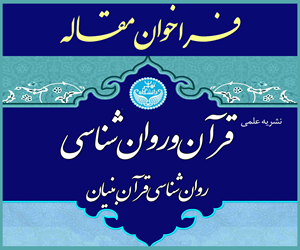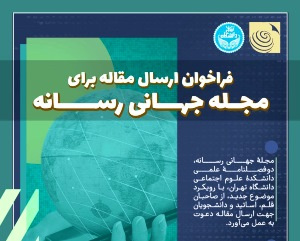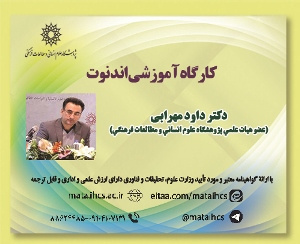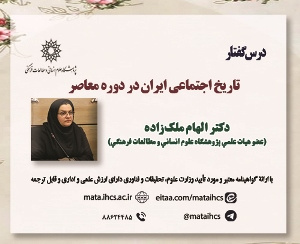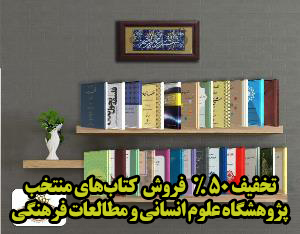راهکارهای افزایش هماهنگی طرح های جامع حمل ونقل و شهرسازی در ایران: تبیین چالش ها (مقاله علمی وزارت علوم)
درجه علمی: نشریه علمی (وزارت علوم)
آرشیو
چکیده
یکپارچگی ضعیف بین برنامه ریزی کاربری زمین و حمل ونقل می تواند منجر به مشکلات عمده ای از جمله اتلاف منابع برای اصلاح ناهماهنگی ها، تعریف کلان پروژه های ناسازگار یا دست کم ناهماهنگ در دو حوزه حمل ونقل و کاربری زمین و در نتیجه کاهش کارایی مدیریت شهری شود. در ایران، برنامه ریزی کاربری زمین در قالب «طرح جامع شهرسازی» و توسعه شبکه حمل ونقل در قالب «طرح جامع حمل ونقل» انجام می شود. در این مطالعه روند تهیه و تصویب طرح های جامع شهرسازی و حمل ونقل با استفاده از مصاحبه نیمه ساختار یافته با 20 نفر از متخصصان این دو حوزه مورد بررسی قرار گرفته است. علاوه بر این بررسی اسناد و ضوابط قانونی برای تکمیل مصاحبه ها انجام شده است. نتایج این مطالعه نشان می دهد که روند حاکم بر تهیه و تصویب طرح های جامع حمل ونقل و شهرسازی تا حد زیادی مستقل از یکدیگر بوده و می توان گفت هماهنگی بین این دو طرح پایین است. در ادامه، با مرور تجارب خارجی در این زمینه و مصاحبه با مدیران شهری و متخصصان داخلی و خارجی، تلاش شده تا پیشنهاداتی به منظور بهبود هماهنگی بین این دو طرح ارائه شود. همچنین برای راهکارهای پیشنهادی مطرح شده در سه دسته شامل 1) تلفیق طرح های جامع شهرسازی و حمل و نقل در قالب یک طرح واحد، 2) تهیه و تصویب همزمان طرح ها و 3) اصلاح روند فعلی تصویب طرح های جامع حمل ونقل و شهرسازی، چالش هایی با استفاده از نتایج مصاحبه ها بیان شده است. در نهایت، با توجه به چالش های جدی تلفیق و انجام همزمان دو طرح، به نظر می رسد زمینه سازی برای تغییر نگرش در فرآیند تهیه و تصویب طرح ها و همچنین توسعه ابزارهای تحلیل یکپارچگی، راهکاری عملیاتی باشد.Solutions to improve the coordination of transportation and urban development plans in Iran: Explaining the challenges
Highlights- Iran's "Urban Master Plan" and "Transportation Master Plan" have been developed independently, typically across different time frames.- Semi-structured interviews and context analysis were used to get expert knowledge to address the contradiction in the two development plans.- This inconsistency of two development plans was revealed through discussions with the experts.- Combining two separate blueprints into one may seem simple, but interviews reveal organizational obstacles make it challenging to implement.IntroductionLand use and transportation are dynamic processes that are interrelated. How land is used has an impact on transportation, and vice versa. The development of new highways and access to metropolitan areas may have an effect on the structure of urban areas. The growth that has occurred around ring roads is an example of how the expansion of transportation networks may guide urban growth. Therefore, urban planning must take into account this connection. However, Iran's "Urban Master Plan" and "Transportation Master Plan" have been developed independently, typically across different time frames, and with approval coming from two separate sources. This has led to inconsistency between the two plans, which can have negative consequences for urban development.Theoretical FrameworkThe Transit Oriented Development (TOD) approach places an emphasis on the integration of land use and transportation. Through taking this strategy, accessibility is improved by providing passengers with a variety of transportation options. Private cars have the advantages of being quick, adaptable, and having a low capacity. The public transportation system is characterized by a large capacity, acceptable speed, and a minimal degree of flexibility. The non-motorized systems have a wide range of possibilities but are quite slow. The fundamental idea of development based on public transportation is that in order to create an alternative to the use of private automobiles, the benefits of public transportation and non-motorized modes of transportation should be combined, and accessibility should be taken into consideration. Therefore, non-motorized options compensate for the inflexibility of public transportation, while public transportation compensates for the slowness of these alternatives. This combination and replacement only work when the population, building density, and distance to services are suitable for walking.MethodologySemi-structured interviews were employed for this study. The focus of a semi-structured interview has been set in advance, and all respondents are asked the same questions; yet, they are free to react according to their own unique perspective. In order to address the issue of inconsistency that arose during the process of drafting the two primary development plans, we acquired the knowledge of subject matter experts through semi-structured interviews and contextual analysis.Results and DiscussionThe first category that has been derived from the interviews is titled "The Urgent Need to Coordinate Comprehensive Plans for Urban Development and Transportation." This type of coordination is essential for the development of broad policies, comprehensive urban planning, and in-depth transportation studies. This inconsistency was revealed through discussions with experts. It is interesting to note that both transportation and urban planning organizations have emphasized the irregularities in plan design. For example, there is a lack of coordination between land use and the construction of new railway lines, traditional car-oriented development continues, and parking restrictions in city centers are inconsistent. Combining two separate blueprints into one may seem like a simple solution. However, expert interviews show that this solution does not directly solve the lack of coordination due to organizational challenges and the interests of specialized consultants in each sector. It is not a high priority for the set of actions to be taken. However, separating the information collection and modeling processes can lighten the burden of developing comprehensive plans, especially in the transportation sector, and provide a framework for the eventual integration of the planning preparation section in urban planning and transportation. This is especially true in the case of the former. It would seem that carrying out two different plans at the same time would be an efficient way to reduce inconsistency. This strategy is operationally preferable to combining two programs and has fewer obstacles. However, it has been shown to be impractical due to bureaucratic, technological, and, most importantly, institutional inequalities in previous experiences. Finding solutions to the earlier problems in the medium term before combining the two strategies could be successful.ConclusionAltering current trends was recommended as a short-term strategy. These ideas highlight the need to use the expertise of experts from multiple fields when developing comprehensive plans. Other suggestions for the short term include having urban planners and transportation experts collaborate to review and regulate overall urban plans. These measures could improve coordination between transportation and land use development. Finally, establishing specialized training and skill development programs, as well as using tools that are both easy and practical for integrated land use and transportation planning, can help to develop human resources and facilitate future process reforms.
